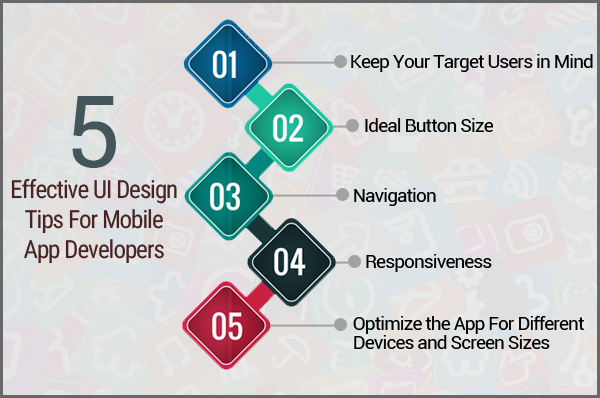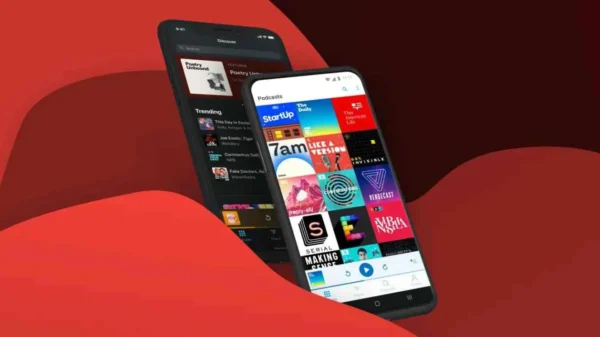Building a mobile app takes a lot of thinking, creativity and planning, so in this article, we're offering five effective UI design tips for mobile app developers. These tips will help you create a truly innovative and effective mobile app for a seamless and smooth user experience.

Effective UI Design Tips For Mobile App Developers
#1. Keep Your Target Users in Mind
When designing UI for mobile app, you must keep in mind your potential user base. Users basically include both novice users and expert users. The novice users usually move much slower through the mobile app, are somewhat uncertain about the functionalities of the buttons, and tend to make more touch mistakes. On the other hand, the expert users are well versed with mobile apps behavior, have the integrated elements memorized. and tend to move through the app more quickly and conveniently. This means that, when creating your mobile app UI, you should make it efficient enough for the experts users, while keeping it informative and simple enough for the novice users.
#2. Ideal Button Size
Button sizes are generally limited to the size of the finger, therefore, if the buttons are too small, the users will not be able to touch them properly. Buttons which have a width that's below 1cm, are slower (or harder) to touch. When designing the UI for an app, you should implement the sufficient button size, along with a gap between the buttons so as to minimize touch errors. When it comes to button location, it's best to keep the primary app buttons at the bottom, and place the often used and more important buttons at the bottom right corner of the screen.
#3. Navigation
Navigation between the major UI items is very important. If it's difficult getting from 1 screen to another, the users will most likely get frustrated, and eventually give up. However, when flow between the screens corresponds to the users flow of work, then the application will be more useful. Since different mobile app users, work in different ways, your particular system should be flexible such that it can support their varied approaches.
#4. Responsiveness
Mobile apps should be high performing, reliable, responsive and fast loading. Slow loading applications, or applications which keep on crashing, eventually get deleted by the user, hence have very low adoption numbers. Make sure the UI is responsive.
#5. Optimize the App For Different Devices and Screen Sizes
UI should be designed such that the application is fully usable on multiple devices and operating systems. Whether it's tweaking media questions, CSS or JavaScript, you should put more effort on taking care of all the problems related to the app display on different mobile devices.
Ultimately, effective mobile application design follows the conventions and principles which work best with different mobile devices and best serve mobile users. In just the same manner which crashes and the functional bugs push away users, poor UI can impact greatly on the user's retention and their app usage. Knowing the medium, and adhering to best practices for app design will help ensure that you deliver a great experience which keeps the users coming back.

















Awesome. I believe that following tips provided by you related with UI designs, I can make my new app design effective and best.
Hi Albert, I am glad and happy the post is helpful to you.
Hey mate, thank you for your inputs! These points are going to be very useful.